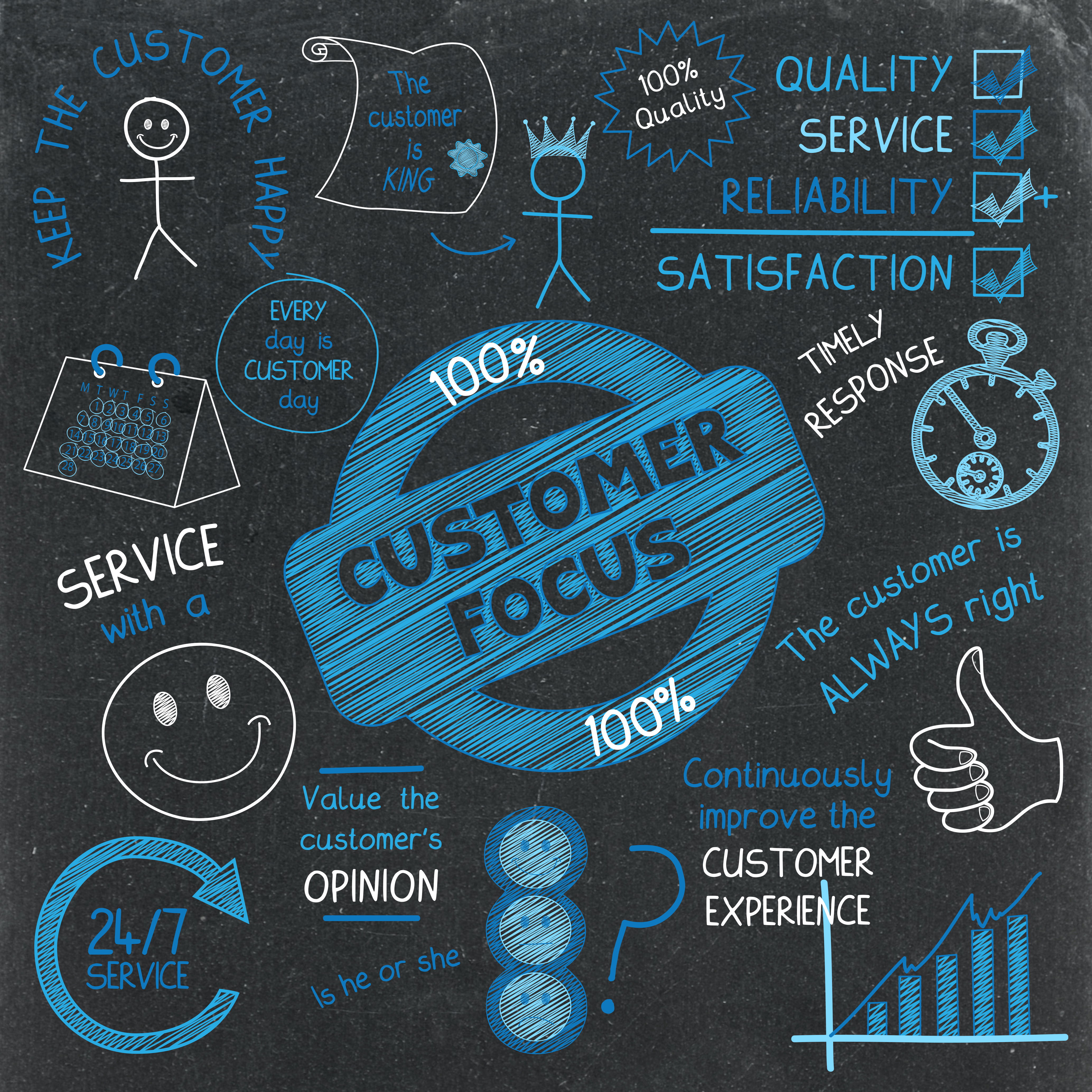Customer-Centric Driven Sales Approach
Consumers hold more power than ever before. With endless options at their fingertips, they choose to do business with brands that truly understand and prioritize their needs.
This shift has made one thing abundantly clear: driving sales isn’t just about having a great product or service—it’s about putting the customer at the center of everything you do.
A customer-centric approach isn’t just a feel-good strategy; it’s a proven way to boost engagement, build trust, and create long-lasting relationships that translate into sales.
By focusing on your customers’ needs, preferences, and pain points, you’re not just selling—you’re solving problems, creating value, and building loyalty.
In this blog, we’ll explore what it means to adopt a customer-centric approach, why it’s so effective at driving sales, and how you can implement this strategy in your business.
Ready to transform your sales game by putting customers first? Let’s dive in.

Key Elements of Being Customer-Centric
- Understanding Your Customers:
Use data, surveys, and conversations to deeply understand your customers’ preferences, challenges, and desires. - Prioritizing Relationships Over Transactions:
Customer-centric businesses focus on building long-term relationships instead of just closing one-time deals. - Empathy and Care:
Showing genuine concern for your customers’ experiences fosters loyalty and encourages repeat business. - Delivering Consistent Value:
Regularly provide solutions, insights, and support that align with your customers’ evolving needs.

Why It Matters
When you center your business around your customers, you create more meaningful interactions, increase brand loyalty, and, ultimately, drive higher sales. Businesses that embrace this approach not only meet customer expectations but often exceed them.
Section 2: Why a Customer-Centric Approach Drives Sales
Adopting a customer-centric approach is more than just a feel-good business practice—it’s a proven strategy to boost sales and create lasting customer loyalty. By focusing on the customer’s needs, preferences, and experiences, businesses can unlock opportunities for growth and profitability. Here’s how:

1. Builds Trust and Credibility
Customers buy from brands they trust. When your business consistently demonstrates that it prioritizes their needs, you build credibility. Personalizing interactions, delivering on promises, and offering genuine value creates a relationship where customers feel confident choosing your brand.

2. Enhances the Customer Experience
A seamless and personalized customer journey keeps buyers engaged and coming back for more. When customers feel seen, heard, and valued at every touchpoint—from the first interaction to post-purchase support—they’re more likely to recommend your business to others.

3. Increases Customer Retention
A customer-centric approach encourages loyalty. Happy customers are not only more likely to return—they also become brand advocates, spreading positive word-of-mouth. Retained customers often spend more over time, increasing their lifetime value to your business.

4. Drives Referrals and New Leads
Satisfied customers love to share their positive experiences. Whether through word-of-mouth, reviews, or social media shoutouts, a customer-centric approach naturally generates referrals. This organic growth leads to new leads and increased sales.

5. Maximizes ROI
Focusing on the customer ensures that your marketing and sales efforts are precisely targeted. By addressing the right pain points and delivering tailored solutions, you optimize resources and achieve better results, driving a higher return on investment.

6. Differentiates Your Brand in a Crowded Market
In industries where competition is fierce, a customer-centric approach sets you apart. Businesses that prioritize customer needs over hard-sell tactics stand out as trustworthy, approachable, and value-driven. This differentiation becomes a key driver of sales.

Real-Life Example: Apple’s Customer-Centric Strategy
Apple’s success is deeply rooted in its customer-centric philosophy. From intuitive product design to exceptional customer support, Apple creates products and experiences that align with customer needs. This approach has fostered a loyal customer base that willingly pays a premium for their products.
By focusing on the customer, your business doesn’t just drive sales—it creates a foundation for long-term success. A customer-centric approach isn’t about selling more—it’s about serving better. When you serve better, sales naturally follow.
Section 3: Steps to Implement a Customer-Centric Sales Strategy
Adopting a customer-centric sales strategy requires more than good intentions—it demands deliberate action and a commitment to understanding and serving your audience. By following these actionable steps, your business can create a customer-first culture that drives sales and builds lasting relationships.

1. Understand Your Customers
To put customers at the center, you need to know who they are and what they want.
- Conduct Research: Use surveys, focus groups, and analytics to gather insights about your customers’ needs, preferences, and pain points.
- Build Customer Personas: Create detailed profiles that represent your ideal customers, including their demographics, goals, and challenges.

Tip: Regularly update your understanding as customer trends evolve.
2. Personalize Every Interaction
Make your customers feel valued by tailoring your communications and offers to their specific needs.
- Use Their Name: Personalize emails, messages, and interactions by addressing customers directly.
- Recommend Based on History: Use purchase history or browsing behavior to suggest relevant products or services.

Example: Streaming platforms like Netflix excel at recommending content based on user preferences.
3. Focus on Solutions, Not Just Sales
Customers don’t want to be “sold to”—they want their problems solved.
- Listen Actively: Understand your customers’ challenges and offer tailored solutions.
- Position Your Product as the Answer: Clearly explain how your product or service addresses their specific needs.

Pro Tip: Empower your sales team with problem-solving skills instead of just selling tactics.
4. Optimize the Customer Journey
Ensure every step of the buying process is smooth, enjoyable, and aligned with customer expectations.
- Simplify Processes: Reduce friction in the customer journey, from website navigation to checkout.
- Offer Omnichannel Support: Be available across channels—social media, email, phone, and in-person—so customers can reach you easily.

Key Metric: Track customer satisfaction at each touchpoint to identify and resolve weak spots.
5. Follow Up Post-Sale
The relationship doesn’t end when the sale is made—it’s just beginning.
- Express Gratitude: Send thank-you notes or follow-up emails to show appreciation.
- Request Feedback: Ask for customer opinions on their experience and use it to improve.
- Encourage Repeat Business: Share loyalty programs, exclusive offers, or tailored recommendations for future purchases.

Example: E-commerce brands that follow up with personalized product recommendations see higher repeat sales rates.
6. Train Your Team to Embrace Customer-Centricity
Your team is the face of your brand. Equip them with the tools and mindset to serve customers effectively.
- Provide Ongoing Training: Teach your sales team to listen actively, empathize, and prioritize customer needs.
- Foster a Customer-First Culture: Reward team members who go above and beyond to delight customers.

Real-Life Application: Amazon’s Obsession with the Customer
Amazon’s relentless focus on customer satisfaction—through fast delivery, easy returns, and personalized recommendations—has made it a global leader in sales and customer loyalty.
Implementing a customer-centric sales strategy isn’t a one-time effort—it’s an ongoing commitment to putting your customers first. By understanding their needs, personalizing interactions, and maintaining a strong relationship post-sale, you’ll create loyal customers who drive your business forward.
We’d love to hear your thoughts!
Share your feedback on this blog post by leaving a comment below.
Feeling overwhelmed with driving sales?
Let us take the stress off your plate!
"Reclaim your valuable time with SocialMedia Beyond's SMB Strategies."
Try it today and elevate your sales!
Ready to level up your sales?
Contact us today to connect with a ROC Specialist and start planning your winning sales strategy!